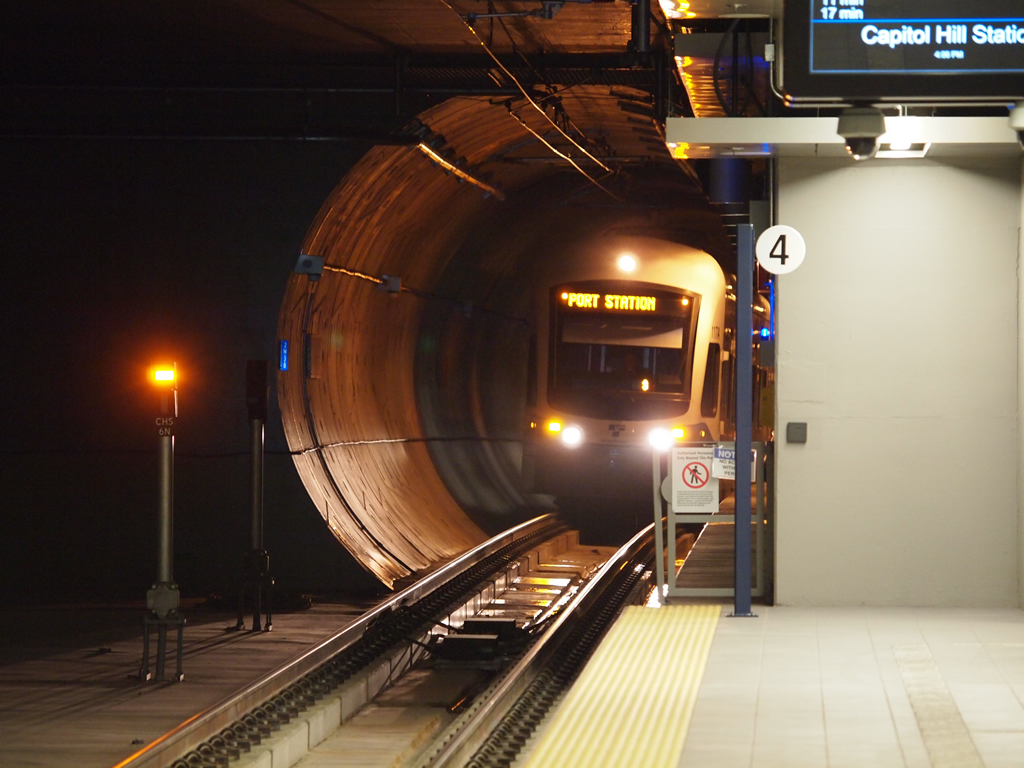Tired of losing cellular service when you descend into an underground Link light rail station? Then rejoice, for Sound Transit has announced that customers on all four of America’s major wireless providers (Verizon, AT&T, Sprint, and T‑Mobile) will soon be able to get a signal in its underground facilities, which include the Downtown Seattle Transit Tunnel, Beacon Hill tunnel, and University Link tunnels.
Said the agency in a news release:
Sound Transit has partnered with wireless infrastructure provider Mobilitie to design and install a Distributed Antenna System (DAS) network that will allow transit riders to use their cell phones while traveling underground. The DAS network, which has been under construction since earlier this year, is beginning a phased rollout this week. By late September, the Mobilitie network will provide wireless cellphone coverage to the tunnel between University of Washington and Westlake in Downtown Seattle, followed later this fall to the tunnels in Downtown Seattle and to Beacon Hill in 2017.
T‑Mobile customers will be the first to get service in the U‑Link tunnels (starting this week), followed by customers of Verizon and AT&T in September. Sprint will follow along sometime after that, Sound Transit says.
Because the DAS network installed by Mobiltie is so new, connectivity ought to be decent, though it remains to be seen how the network holds up when there’s a lot of demand. The company’s “high-density wireless infrastructure is designed to enable rich, interactive mobile experiences, including real-time video streaming, 5G, and other mobile applications,” Sound Transit says.
That suggests that riders who want to watch YouTube, Netflix, Hulu, HBO Go, or other video sites on their smartphone, tablet, or notebook will be able to do so.
Public Wi-Fi is currently available at the DSTT’s four stations (International District, Pioneer Square, University District, Westlake) but cellular service is spotty or nonexistent in the transit tunnels, hampering riders’ ability to make plans with friends and family, or simply get some work done.
That’s all about to change now.
The availability of cellular service in the tunnels will also mean that phone conversations can be held underground. Hopefully, Sound Transit will double down on posting riding etiquette reminders to encourage riders to refrain from having loud phone conversations on trains, buses, and station platforms.

